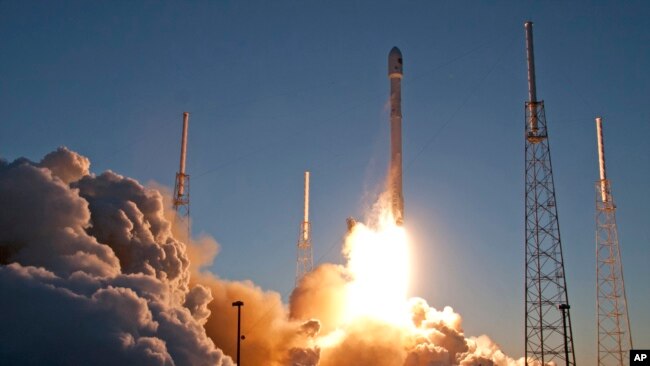宇宙解明には、衝突は気にならないようですが、月好きの私としては気になります。
”宇宙ゴミは可能な限り月に向けられるべきだ”だなんて。。。
ロケットの残骸、3月に月面に衝突する見込み(和訳)
Remains of Rocket Expected to Hit Moon in March
科学者によると、2015年に人工衛星の配備に使われたロケットの残骸が、3月上旬に月に衝突する進路をとっているといいます。
この物体は、SpaceX社のFalcon 9ロケットの第2段の飛行中にブーストするために使用されたものです。このような宇宙船や機器の残骸は、宇宙ゴミと呼ばれています。
ロケットの残骸の進路を最初に観測したのは、アメリカのビル・グレイ氏です。彼は天文学者で、アメリカ北部のメイン州に拠点を置くプロジェクト・プルートの生みの親です。彼は、宇宙ゴミを含むさまざまな宇宙物体の軌道を追跡できるソフトウェアを開発・販売しています。
グレイ氏は、月へ向かう天体の進路に関する情報をウェブサイトで公開しています。彼の情報は、彼自身の観測と、他の人から集めた情報に基づいているとのことです。
その物体の重さは約4トンで、秒速2.58キロメートルで月にぶつかると彼は記しています。グレイ氏によると、すべてのデータは、ロケットが3月4日12時25分(世界時)に月の裏側に衝突することを示しているといいます。月の裏側は地球から遠い方向を向いています。
この予想される衝突は、天体物理学者のジョナサン・マクダウェル氏や米宇宙機関NASAも確認しています。マクダウェル氏は、マサチューセッツ州のハーバード大学とスミソニアン博物館が共同で運営する天体物理学センターに所属しています。
マクダウェル氏はオンライン声明で、過去に "月探査のガラクタがたくさん月に衝突して終わっている "と書いています。しかし、彼は、"明確に月をターゲットにしていないものが、偶然に月にぶつかることが注目されたのは初めてだ "と指摘しています。マクダウェル氏はTwitterで、予想される打撃を "興味深いが、大したことではない "と指摘しています。
グレイ氏は同意し、そして月には、SpaceX社のロケットの残骸よりも高速で移動する大きな物体が定期的に衝突していると言います。月がクレーターだらけになったのはそのためだと、彼は指摘しています。「月はそのような酷使に耐えられるようによくできています。とグレイ氏は書いています。
マクダウェル氏は、SpaceX社のブースターのように、長い間行方不明になっている”失われた深宇宙物体”が30~50個ほどあり、中には50年も前のものもあると述べています。さらに、「おそらく、そのうちのいくつかは、我々が気づかないうちに月に衝突してるでしょう。 」と付け加えています。
マクダウェル氏は、SpaceXロケットの残骸は、宇宙ゴミの問題が大きくなり、危険性が増していることの一例に過ぎないと述べています。「私は、世界が深宇宙活動の規制とカタログ化についてもっと真剣になるべき時だと思う。 」と彼は書いています。
NASAの広報担当者は、フランス通信社(AFP)に対し、宇宙機関は予想される衝突を”エキサイティングな研究機会”と見ていると述べます。しかし、彼女は、作られるクレーターを見つけるのは難しく、"数週間から数ヶ月 "かかるかもしれないと言っています。
というのも、この衝突は地球からリアルタイムで見ることができないからです。また、現在月を周回しているNASAのルナ・リコネイサンス・オービターも、衝突が起こったときに観察できる状態にはないだろうと広報担当者は述べています。
過去には、科学実験のために宇宙船が意図的に月に衝突したことがあります。しかし、このように計画外の衝突が確認されたのは、おそらく今回が初めてでしょう。
グレイ氏は、宇宙ゴミは可能な限り月に向けられるべきだと考えています。「もし月に落ちれば、そこから何かを学ぶことができるのです」と彼は言います。
Remains of Rocket Expected to Hit Moon in March
Scientists say the remains of a rocket used to help deploy a satellite in 2015 is on a path to strike the moon in early March.
The object was used to boost a SpaceX Falcon 9 rocket during its second stage of flight. Such leftover parts from spacecraft and equipment are known as space junk.
The path of the rocket remains was first observed by American Bill Gray. He is an astronomer and the creator of Project Pluto, based in the northern U.S. state of Maine. He develops and sells software that can track the path of different space objects, including space junk.
Gray has been publishing information about the object’s path toward the moon on a website. He says his information is based on his own observations as well as those gathered from others.
He writes that the object weighs about four tons and will strike the moon at a speed of 2.58 kilometers per second. Gray says all his data shows that the rocket will hit the far side of the moon on March 4, at 12:25 Universal Time. The far side of the moon faces away from Earth.
The expected strike has also been confirmed by astrophysicist Jonathan McDowell, as well as the U.S. space agency NASA. McDowell is with the Center for Astrophysics, which is jointly operated by Harvard University in Massachusetts and the Smithsonian Institution.
McDowell writes in an online statement that, in the past, “lots of junk from lunar missions has ended up hitting the moon.” But he notes that this “is the first time that something not explicitly targeted at the moon has been noticed to accidentally hit it.” McDowell noted on Twitter that he finds the expected strike “interesting, but not a big deal.”
Gray agreed and said the moon is regularly hit with larger objects moving faster than the remains of the SpaceX rocket. That, he notes, is how the moon got all its craters. “It’s well built to take that sort of abuse,” Gray writes.
McDowell said there are about 30 to 50 “lost deep space objects” like the SpaceX booster that have long been missing, some as old as 50 years. He added, “Probably some of them hit the moon without us noticing.”
McDowell said the remains of the SpaceX rocket is just one example of the growing problem and possible dangers of space junk. "I think it’s time for the world to get more serious about regulating and cataloging deep space activity,” he wrote.
A NASA spokeswoman told the French Press Agency, AFP, that the space agency sees the expected strike as “an exciting research opportunity.” But she said it might be difficult and take “weeks to months” to find the crater that is created.
This is because the strike cannot be seen from Earth in real time. Also, NASA’s Lunar Reconnaissance Orbiter – which is currently orbiting the moon – will not be in a position to observe the hit as it happens, the spokeswoman said.
In the past, spacecraft have been crashed into the moon on purpose for scientific experiments. But this is likely the first unplanned strike to be identified in this way.
Gray thinks space junk should be directed toward the moon whenever possible. “If it hits the moon, then we actually learn something from it,” he said.
Words in This Story
boost – v. to push or shove up from below
track – v. to record the progress of development of something
explicit – adj. clear and exact
notice – v. to see something and be aware of it
crater – n. a round hole made by an explosive force such as a bomb or an object falling from the sky
regulate – v. to control an activity or process, especially by using rules
catalog – v. to make a list of things, especially in order to put it in a catalog
opportunity – n. a situation in which it is possible for a person to do something
